Editor’s Note: This post is written by a member of LTV’s sponsored content team, The Leisure Explorers. Do you own a Leisure Travel Van and enjoy writing? Learn more about joining the team.
Discovering Hoodoos, Speleothems, and Extinct Reptiles
When planning a trip to unknown places, friends’ recommendations can help you discover beautiful scenery, quirky stops, and more. As native Michiganders, we had traveled through Nebraska many times heading west. But this trip west in the winter of 2022 was different. We headed south, then west, now driving on Interstate 10 into Arizona rather than 80 or 90 to Colorado in “Lucky Us,” our 2015.5 Unity Murphy Bed. If you haven’t read the other parts of this trip, you can read them here.
The biggest difference for us on Interstate 10 was the wind. As in high winds, dust devils, dust storms, and more. We kept our eyes on our weather and map apps the weeks prior, knowing that I-10 had shut down several times. Our schedule, leaving Lordsburg, New Mexico March 8, put us in a position for good weather to drive I-10 into Arizona. The highway was open and so we drove, marveling at the frequent warning signs that to us flatlanders from Michigan, were not accustomed to see. Signs that warned of high winds, crosswinds, and dust storms.
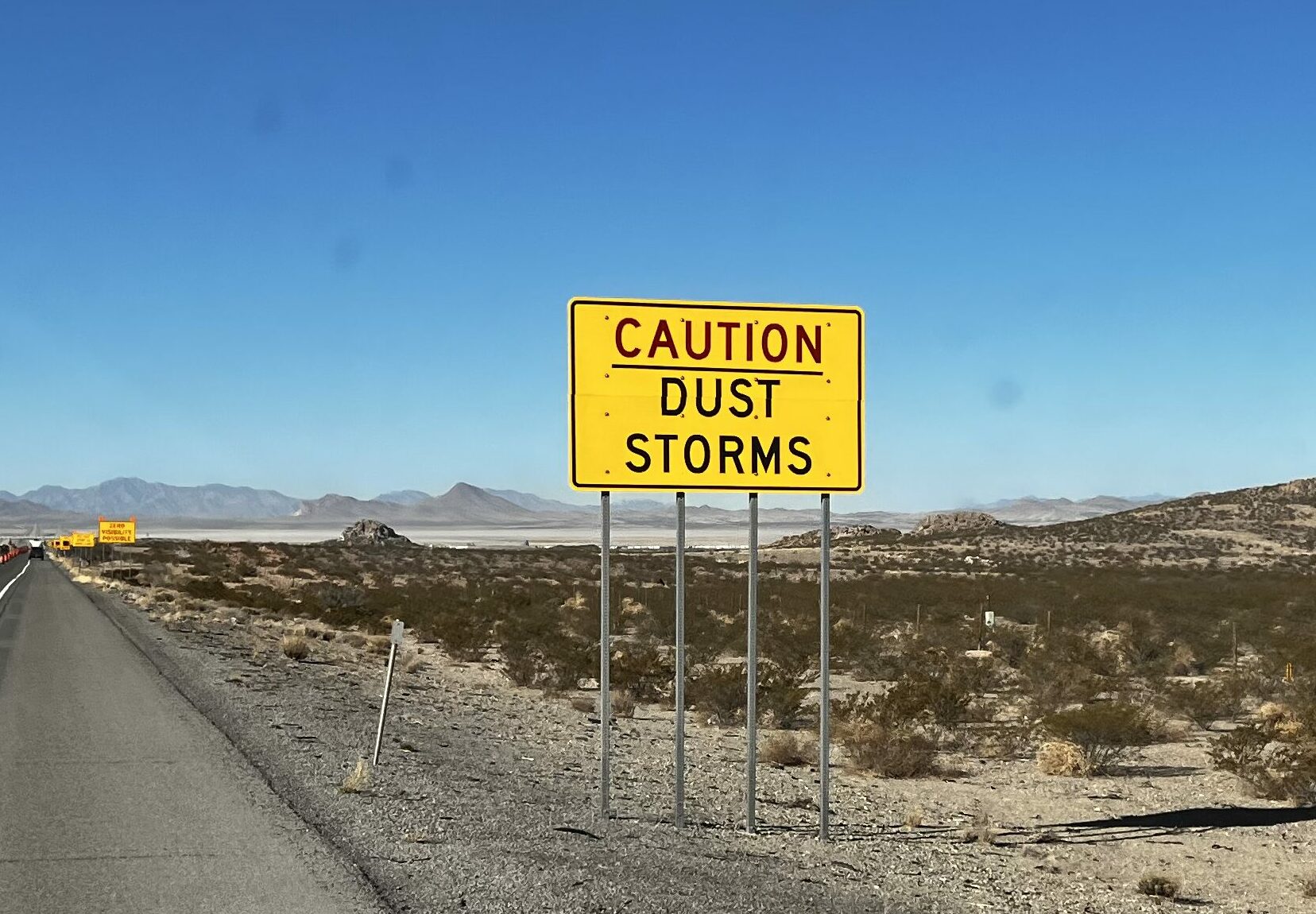
But back to those helpful recommendations. We originally planned to drive from New Mexico to Tucson, and then Phoenix, stopping at both places to visit friends. My friend back home who visits Tucson frequently recommended Chiricahua National Monument and my Tucson friend recommended Kartchner Caverns State Park, and so we took their advice. Both did not disappoint.
Chiricahua National Monument
Our LTV friends Bob Freese and Peggy Schaefer recently completed a seven-mile hike at Chiricahua National Monument and I had visions of doing the same. We met them in Lordsburg for one night, and our ride the next day west along I-10, then south to the park, took quite a bit longer than expected. We stopped at the Visitor Center to see which hike would be best for us and where to park. Since it was now nearly noon, we decided on the Echo Canyon Loop Trail, a shorter, moderate hike. The road to the trailhead parking lot was already full, and we had to drive a bit farther up the road passing signs that limit the size of vehicles. The park ranger had assured us it would be ok, but by the time we turned around and parked, we now had to walk a one-third mile just to get to the trailhead.

It was already after noon once we were on the trail, and we did hike a good part of it, enough to see incredible rock formations, hoodoos, and more. Hikes are rated easy (short, fairly flat), moderate (one to four-hour hike/up to 500-foot elevation change), and strenuous (three to eight-hour hikes with 500-1,000 foot elevation changes.) Leashed pets are allowed on designated trails. Our hike was rated moderate and was a bit more challenging than we expected.
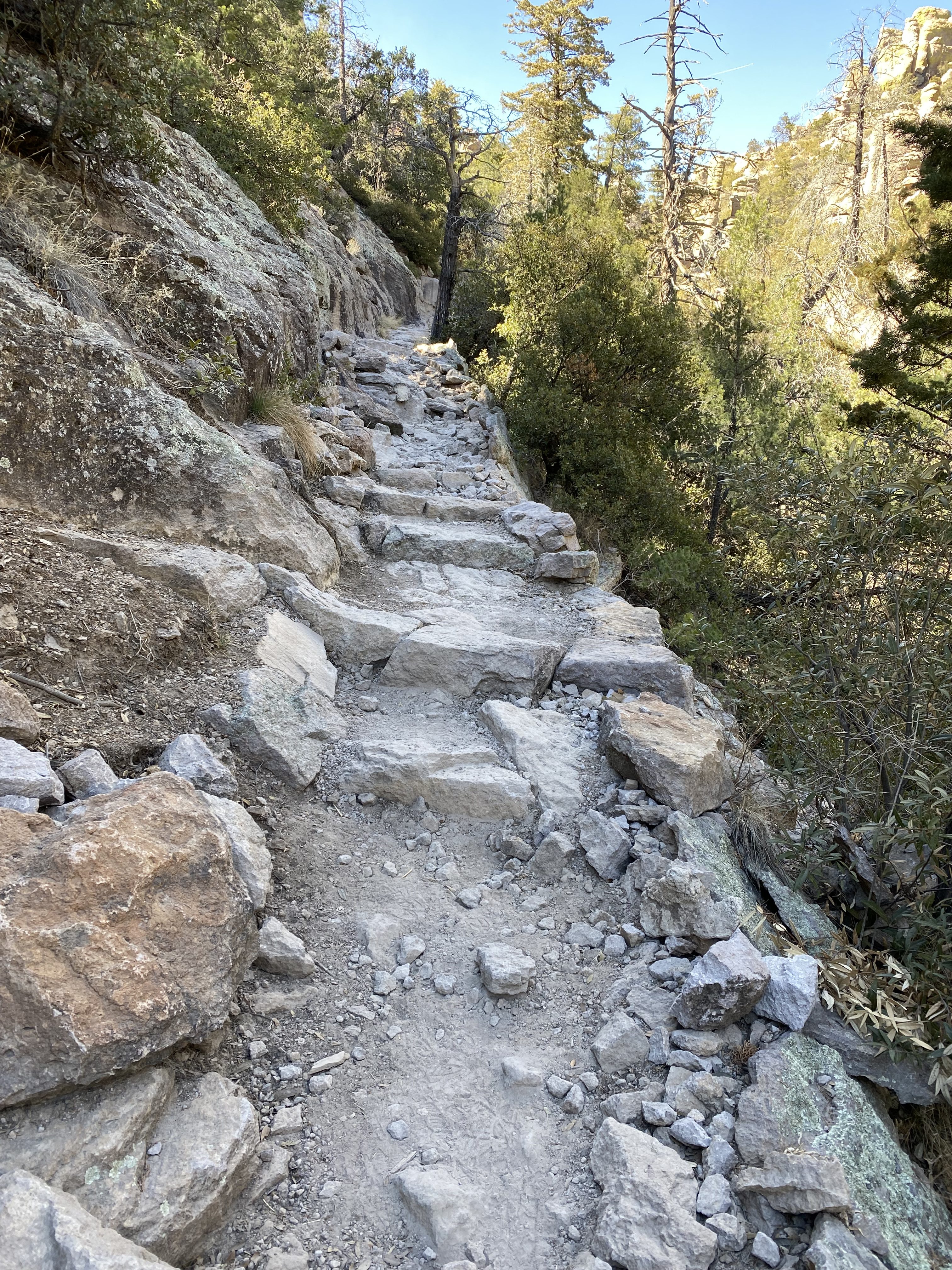
Once off the trail, we mapped our route to Kartchner Caverns, deciding to take the side roads instead of going back north to I-10, and saw something quirky neither of our friends told us about. But now you’ll know about it.
Rattlesnake Ranch Sculpture Garden
Once we left the park, we took 181 to Sunizona, and then 191 toward I-10 to Kartchner Caverns. Along the way, we saw the most incredible gigantic boulders that seemed to be placed there, giving us the feeling of being in a Flintstones cartoon. Then we approached a group of metal sculptures and more at the Rattlesnake Ranch Sculpture Garden, 4655 E. Dragoon Road, Benson. This unusual stop is just three miles east of I-10 on the Dragoon Road Exit.

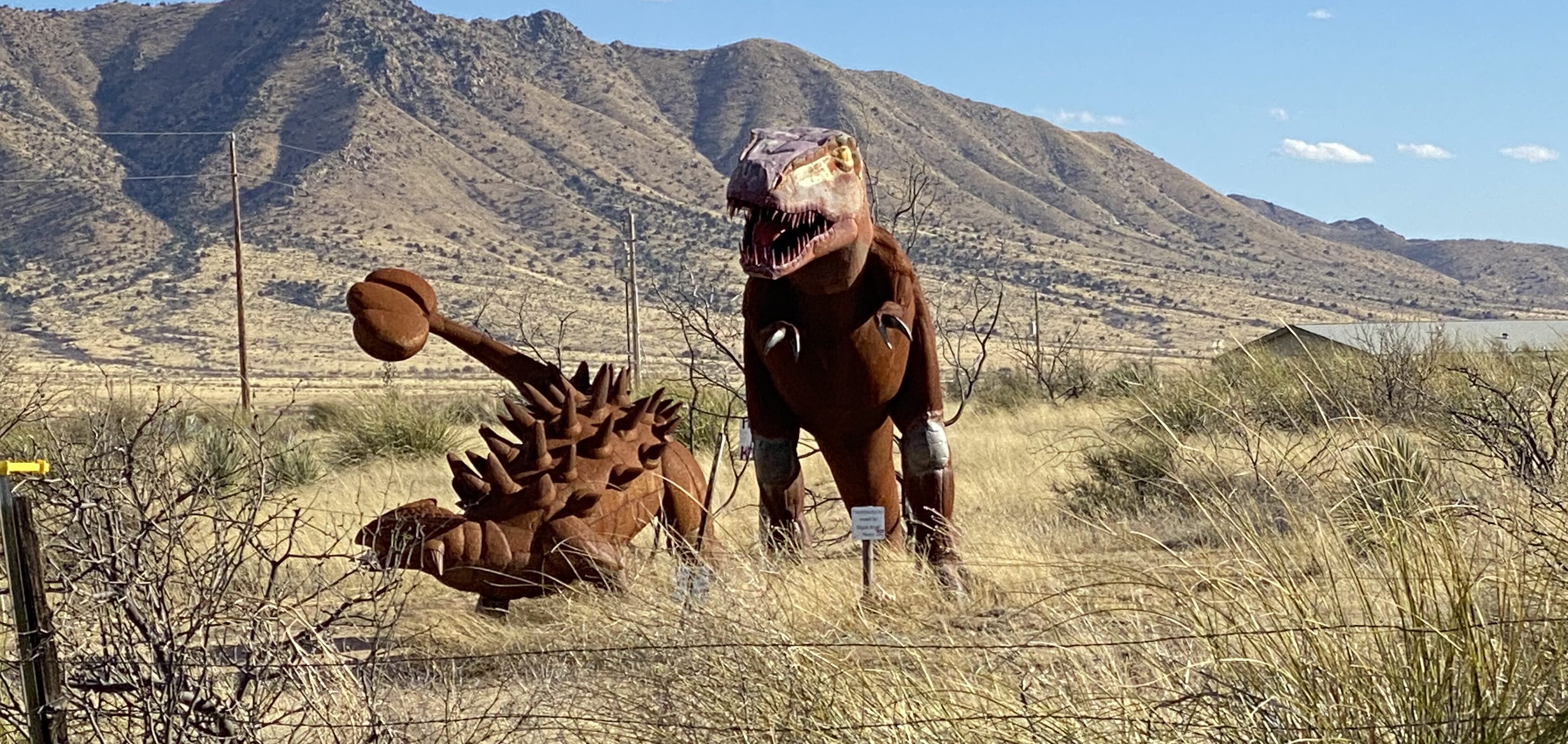
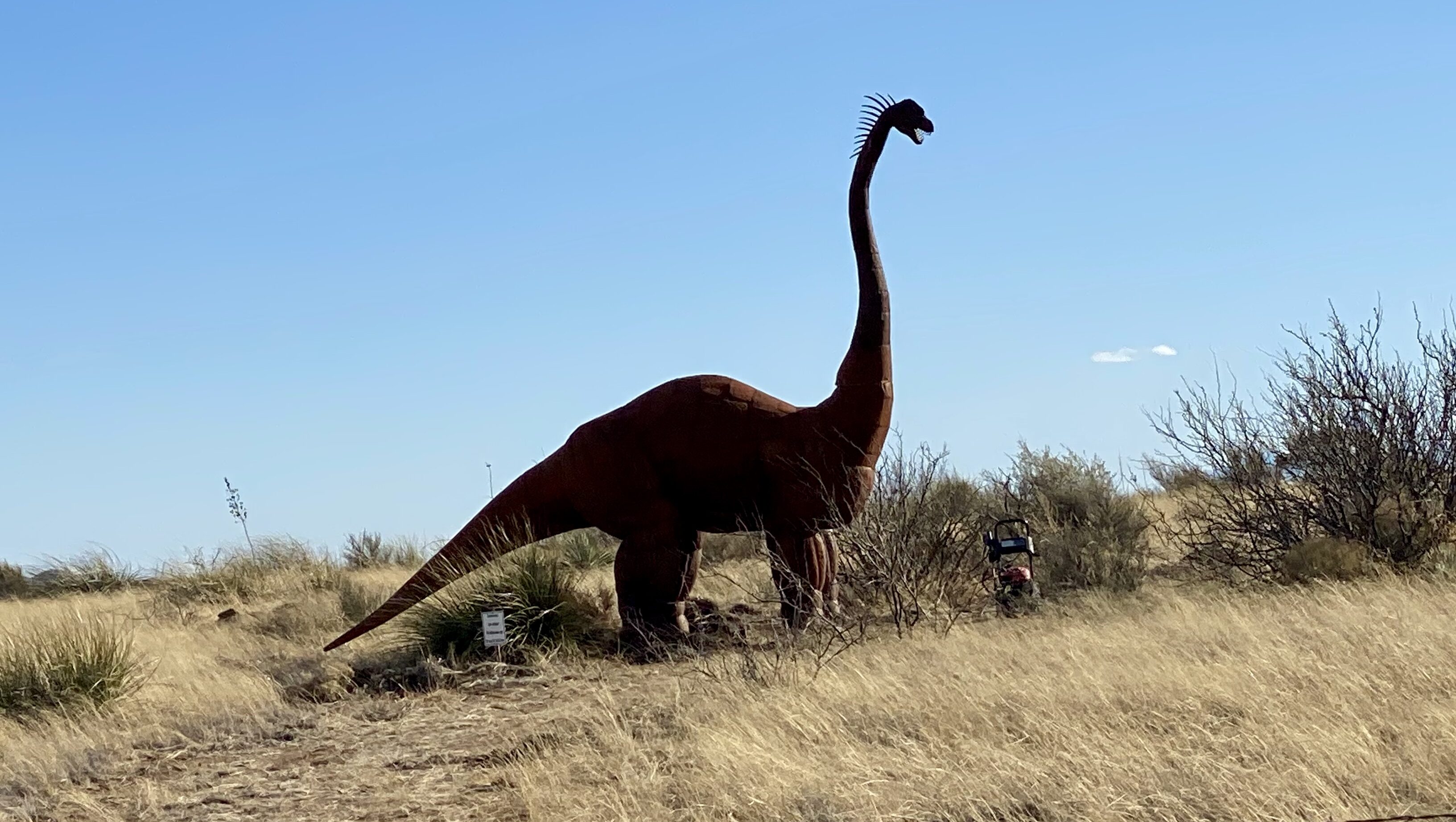
Kartchner Caverns
We overnighted at Kartchner Caverns State Park campground, at the base of the Whetstone Mountains. This cavern, discovered in 1974 by Gary Tenen and Randy Tufts, and later acquired by Arizona State Parks, opened to the public in 1999. Tenen and Tufts kept the caves secret and didn’t tell the property owners, James and Lois Kartchner until 1978. Formed from a block of Escabrosa limestone, which is unique to Arizona, Kartchner Caverns is ranked in the top ten caves worldwide for its unusual mineralogy. It’s a living cave, which means the formations of speleothems (stalactites and stalagmites formed by dripping or seeping water) formed over hundreds of thousands of years are still growing.
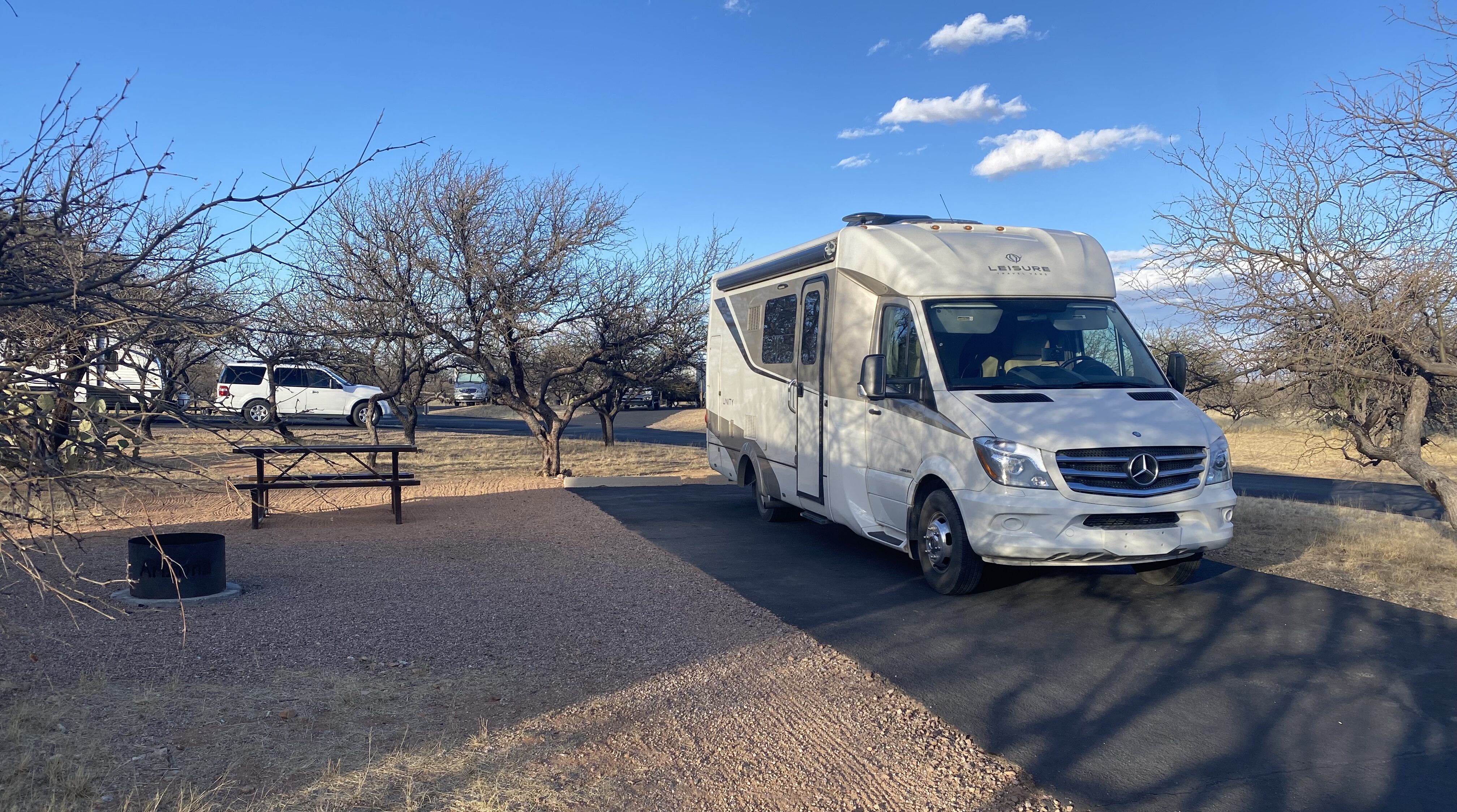
Be sure to study their website prior to visiting–advance tickets are highly recommended for the guided cave tours, and the list of items not allowed into the cave is lengthy–cellphones, cameras, backpacks, purses, and more are not permitted. Also, please familiarize yourself with protocols to prevent the spread of white-nose syndrome, a fungal disease deadly to bats. We wore shoes different than those we wore at Carlsbad Caverns; if you wear the same shoes recently worn in another cave, you’ll be asked to decontaminate your shoes by spraying them down with rubbing alcohol. The cave stays at a consistent 70 degrees with 99 percent humidity and comfortable hiking shoes are recommended.
Tours explore the Rotunda/Throne Room or Big Room. A Helmet & Headlamp Tour, in which you walk in the same light as the explorers did, is also offered. Something new is a photo tour is offered once a month. Tours are half a mile long and take 1.5 to 1.75 hours. An electric tram takes you from the Visitor Center to the cavern entrance. Before entering, our guide asked everyone wearing a jacket to tie it around their waists.
The Big Room serves as a nursery roost for over 1,000 female cave myotis bats. Females return to the caverns at the end of April, where they give birth in late June-early July. Moms and offspring stay for 5-6 months and leave in mid-September to begin their migration for their winter hibernation roost.
Start at the Discovery Center, where you will pick up your tour tickets, then you will wait in the queue to begin your tour. After your tour, be sure to see the exhibits at the Center, including 86,000-year-old sloth bones and a 36,000-year-old horse skull, along with a bear, antelope, bobcat, ringtail cat, and rabbit.
Two days in southeast Arizona barely skims the surface of things to see and do. Be sure to study the websites and plan accordingly. Next up: camping among the saguaros.
When You Go
Please be sure to check your weather app for wind conditions along I-10 before driving, and watch for road closures. We recommend staying at or near Chiricahua National Monument if you are planning a day hike in order to arrive early and avoid mid-day sun; dress accordingly and bring plenty of water. The park recommends one quart of water per hour in the summer, salty snacks and/or electrolytes, plus appropriate hiking gear.
Purchase your tickets in advance, be mindful if you’ve just toured another cave, and review all restrictions before taking a guided tour at Kartchner Caverns.


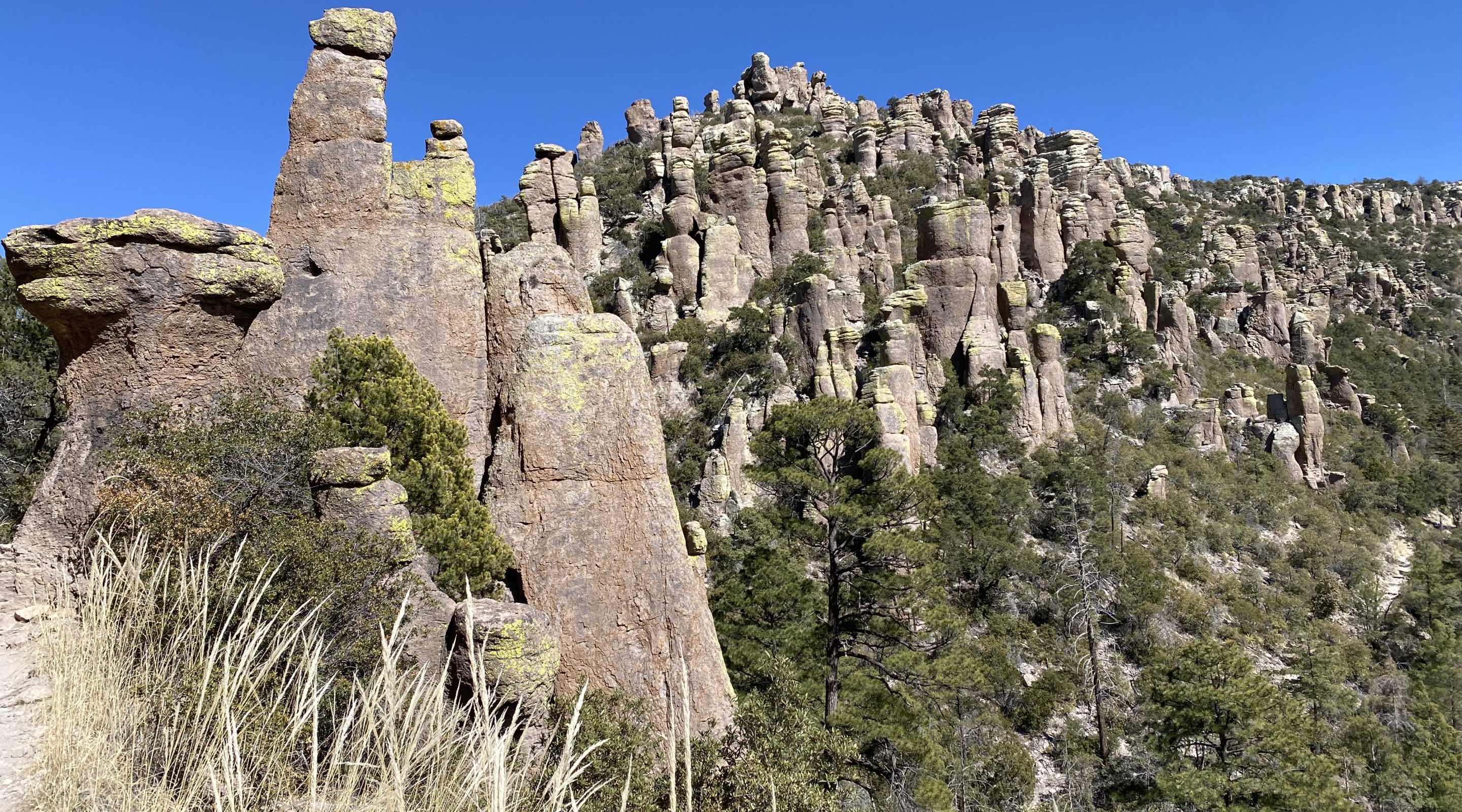
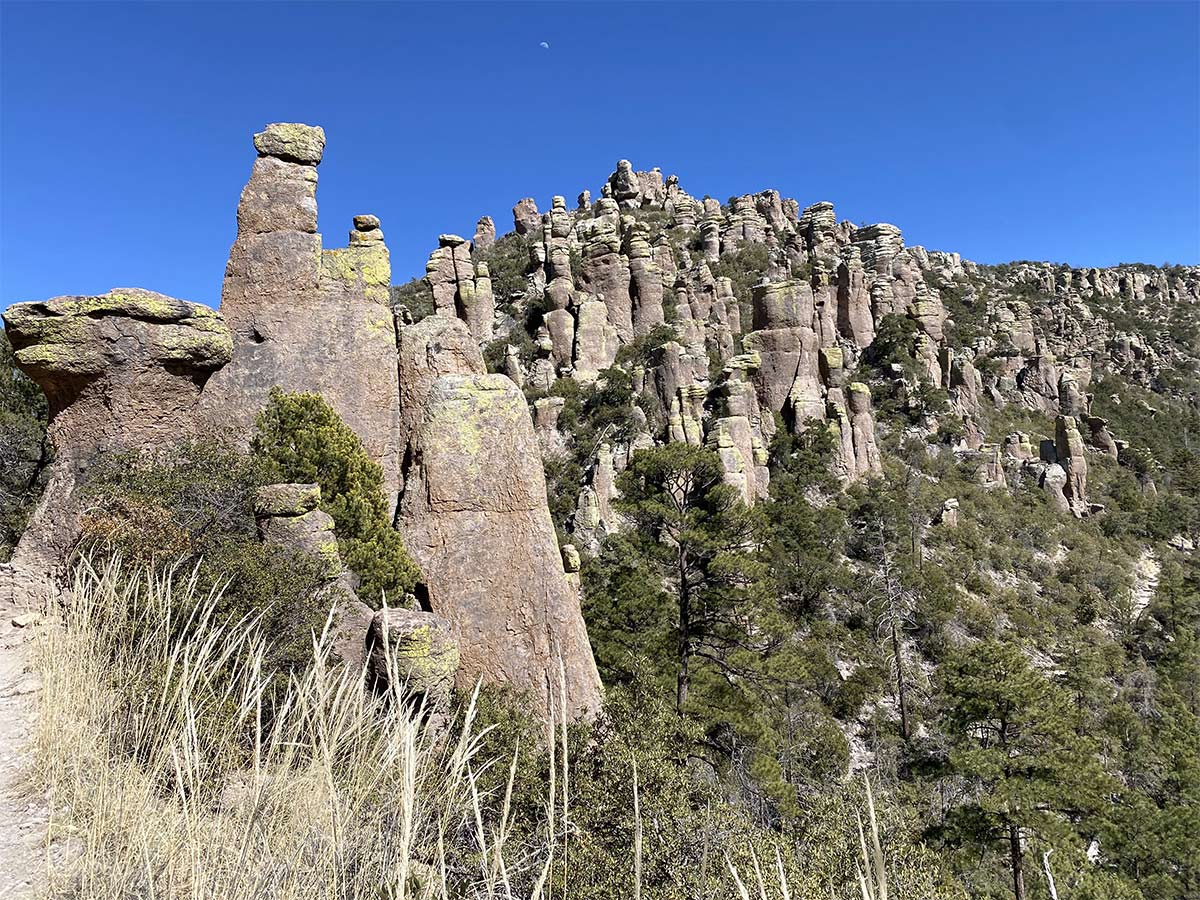



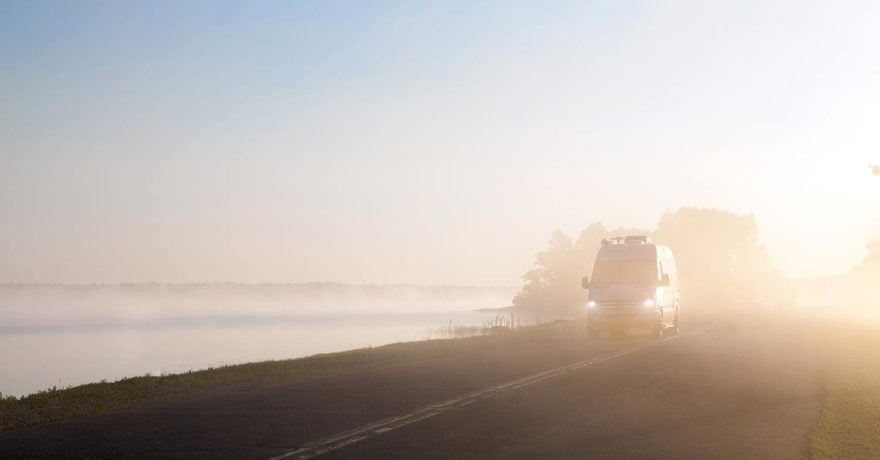
Comments